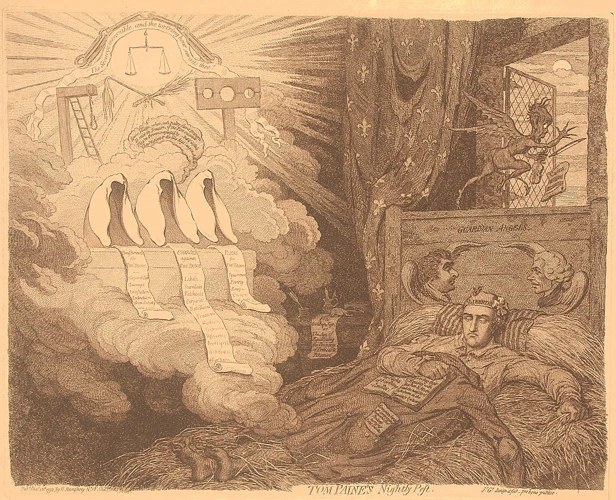What Does Suffocating in a Dream Mean? Decoding the Symbolic Message
Have you ever woken up from a dream feeling suffocated or breathless, wondering what could possibly be the meaning behind such a distressing experience? Dream symbolism is a fascinating realm that offers insights into our subconscious mind. Suffocating dreams carry significant symbolic messages that can help us better understand our emotions and inner conflicts. In this article, we will explore the various interpretations of suffocating dreams, including the common themes they represent. Additionally, we will discuss techniques that can be employed to overcome these unsettling dreams and gain a sense of peace and control. Whether you have been haunted by suffocating dreams or are simply curious about their significance, join us as we delve into the depths of this enigmatic dream experience.
The Symbolism Behind Suffocating in Dreams

Suffocating dreams hold profound symbolic meaning that can shed light on our inner psyche. These dreams often reflect feelings of restriction, constraint, or being overwhelmed in our waking lives. The sensation of suffocation in dreams represents a struggle for freedom and the need for self-expression. It can indicate a state of fear, stress, or anxiety that is suffocating our true selves. The symbolism behind suffocating in dreams may also hint towards suppressed emotions or a lack of communication in our relationships. This lack of emotional expression can weigh us down, leaving us gasping for air in our dreams. Exploring further, suffocating dreams can symbolize control issues, where we feel suffocated by external pressures or a need to assert dominance. They may also serve as reminders of powerlessness or vulnerability, arising from situations where we feel helpless or overwhelmed. In some cases, suffocating dreams might be connected to repressed memories or unresolved trauma, signifying the need for healing and resolution. Understanding these symbolic messages can provide valuable insight into our innermost feelings and help us navigate the challenges we face in our waking lives.
Common Interpretations of Suffocating Dreams

Suffocating dreams can be interpreted in various ways, each providing a glimpse into our subconscious mind and emotional state. Here are some common interpretations of suffocating dreams:
1. Fear or Stress: Suffocating dreams often reflect underlying fears and sources of stress in our lives. These dreams may indicate anxiety about a particular situation, such as a looming deadline or a challenging decision to make.
2. Suppressed Emotions and Communication: Dreams of suffocation can symbolize our inability to express ourselves or communicate effectively in waking life. They may suggest unspoken feelings or a lack of assertiveness in our relationships, leading to a sense of suffocation.
3. Control Issues: Suffocating dreams may arise from a desire for control or feeling overwhelmed by external pressures. These dreams might indicate a need to establish boundaries or assert dominance in certain areas of life.
4. Powerlessness or Vulnerability: Dreams of suffocation can represent feelings of powerlessness or vulnerability. They may be triggered by situations where we feel helpless or overwhelmed, highlighting the need for empowerment and self-protection.
5. Repressed Memories or Trauma: In some cases, suffocating dreams could be linked to repressed memories or unresolved trauma. These dreams may serve as a reminder of unaddressed emotional pain, urging us to seek healing and resolution.
By recognizing and understanding these common interpretations, we can gain valuable insights into our emotions and inner conflicts, paving the way for personal growth and self-discovery. [Learn more about dreams of rejecting someone here.](/what-does-it-mean-when-you-dream-about-rejecting-someone/)
1. Fear or Stress
Fear and stress are common factors behind suffocating dreams. These dreams manifest when we are experiencing intense anxiety or facing a situation that threatens our sense of security. The feeling of suffocation in the dream is a symbolic representation of the overwhelming fear or stress we are currently experiencing. It could be related to work, relationships, health, or any other aspect of our lives that is causing us significant distress. These dreams serve as a subconscious outlet for our emotions, allowing us to confront and process our fears in a symbolic way. It’s essential to address the root causes of our fears and find healthy coping mechanisms to alleviate stress in order to prevent the recurrence of suffocating dreams. Understanding the underlying fears and taking steps to manage them can help us regain a sense of tranquility and breathe freely once again.
2. Suppressed Emotions and Communication
Suppressed emotions and lack of communication are significant themes that can be associated with suffocating dreams. When we suppress our emotions, they can build up like a pressure cooker, causing us to feel suffocated and stifled. These dreams serve as a reminder that it’s essential to express and process our emotions in a healthy way. Additionally, suffocating dreams can also indicate a lack of communication in our relationships. When we fail to express ourselves openly and honestly, it can create a sense of suffocation and frustration. These dreams encourage us to examine our communication patterns and address any underlying issues. By acknowledging and expressing our emotions, and fostering open lines of communication, we can alleviate the suffocating feeling that may manifest in our dreams.
3. Control Issues
Dreams of suffocation can often be an expression of control issues in our lives. When we feel overwhelmed or suffocated by external pressures, expectations, or responsibilities, these emotions can manifest in our dreams. The sensation of suffocating may reflect a lack of control or a feeling of being trapped in a situation. It could be a subconscious reminder to assert our autonomy and establish healthy boundaries. These dreams might also indicate a need to examine our own desire for control, recognizing when it becomes excessive or stifling. It is important to consider the aspects of our lives where control may be an issue, such as relationships, work, or personal goals. By addressing and exploring these control issues, we can work towards finding a balance that allows for personal growth and a sense of freedom.
4. Powerlessness or Vulnerability
Feelings of powerlessness or vulnerability often play a significant role in suffocating dreams. These dreams reflect a sense of being trapped or overpowered, where our ability to assert control or protect ourselves feels futile. When experiencing powerlessness or vulnerability in our waking lives, it can manifest in our dreams as a suffocating sensation. This may be linked to situations where we feel helpless, such as dealing with a difficult boss, facing a challenging life transition, or grappling with a loss of control. The suffocating symbolism in these dreams serves as a reminder to address these underlying feelings and find ways to regain a sense of empowerment. Seeking support from trusted individuals or therapists can offer guidance in navigating these emotions and help us overcome the sense of powerlessness or vulnerability that may pervade our dreams.
5. Repressed Memories or Trauma
Repressed memories or trauma can play a significant role in suffocating dreams. These dreams can act as a symbolic manifestation of unresolved past experiences or traumatic events that have been pushed deep into our subconscious. The feeling of suffocation in these dreams may reflect the emotional weight and burden associated with repressed memories. The body’s response to trauma includes feelings of constriction and being trapped, which can be represented as suffocation in dreams. These dreams may serve as a reminder that it is essential to address and heal from past traumas, allowing for personal growth and emotional well-being. If you’re interested in exploring more about the symbolism behind dreams, you can also read about what a doorbell means in a dream or what it means when you dream about dirty public bathrooms, as they provide further insights into the rich world of dream interpretation.
Techniques to Overcome Suffocating Dreams
When suffocating dreams become a recurring and distressing experience, it is important to develop techniques to overcome them and find relief. Here are some effective strategies to help you regain control and bring peace to your dream world.
1. Dream Journaling: Keeping a journal next to your bed and jotting down your dreams as soon as you wake up can offer valuable insights. Analyzing patterns and symbols in your suffocating dreams may provide a deeper understanding of their meaning.
2. Lucid Dreaming Techniques: Practice lucid dreaming techniques to gain awareness and control within your dreams. This allows you to consciously redirect the dream narrative and alleviate feelings of suffocation.
3. Visualization and Positive Affirmations: Before going to bed, visualize yourself in positive and peaceful situations. Incorporate affirmations that empower you and alleviate any feelings of suffocation or restriction.
4. Seek Professional Help: If suffocating dreams persist and significantly impact your well-being, consider seeking professional help from a therapist or dream analyst. They can guide you through the process of uncovering deeper meanings and finding ways to overcome these unsettling dreams. By employing these techniques, you can regain a sense of control over your dreams and promote a more restful and liberating sleep experience.
1. Dream Journaling
Utilizing the technique of dream journaling can be highly beneficial for deciphering the meaning behind suffocating dreams. By keeping a dedicated journal by your bedside and recording the details of your dreams immediately upon waking, you can capture the essence of your suffocating dreams while they are still fresh in your mind. Take note of any emotions, symbols, or recurring themes that stood out to you during the dream. Through this process, patterns may emerge, providing valuable insights into what your suffocating dreams may represent. Journaling can also serve as a cathartic release, allowing you to express your emotions and gain a sense of clarity. With time, you might even notice connections between your suffocating dreams and real-life situations. By fostering a habit of dream journaling, you can unlock the hidden symbolism within your dreams and promote a deeper understanding of yourself.
2. Lucid Dreaming Techniques
Lucid dreaming offers a powerful tool to take control of your dreams, including suffocating dreams, and transform them into positive experiences. Here are a few techniques to help you achieve lucidity in your dreams:
- Reality checks: Throughout the day, perform reality checks to build the habit of questioning whether you are dreaming or awake. This will increase the likelihood of performing these checks within your dreams, which can trigger lucidity.
- Mindfulness meditation: Practicing mindfulness during wakefulness can extend into your dream state. By cultivating present moment awareness, you may become more aware of the dream world while you are in it.
- Dream journal: Keep a dream journal by your bedside and record your dreams immediately upon waking. This practice helps enhance dream recall and increases your connection to the dream world.
- Affirmations: Before going to sleep, repeat affirmations to yourself such as, “I am aware that I am dreaming,” or “I will recognize when I am in a dream.” These affirmations can program your subconscious mind for lucid dreaming.
- Reality anchors: In your dreams, try to find stable elements that will anchor your awareness. For example, look at a digital clock twice, and you may notice that the time changes drastically from one glance to the next, signaling that you are in a dream.
By practicing these lucid dreaming techniques, you can gain more control over your dreams and potentially transform suffocating dreams into empowering experiences.
3. Visualization and Positive Affirmations
Visualization and positive affirmations can be powerful techniques to overcome suffocating dreams and regain a sense of control and peace. Through visualization, we can create a mental image of a calm and safe environment where we can breathe freely and deeply. This technique helps to counteract the feeling of suffocation and replaces it with a sense of relaxation and serenity. Additionally, incorporating positive affirmations in our daily routine can have a profound impact on our subconscious mind. By repeating affirmations such as “I am safe,” “I am in control of my life,” or “I breathe freely and easily,” we reprogram our thoughts and beliefs, replacing fear and anxiety with confidence and empowerment. Embracing visualization and positive affirmations as part of our daily practice can gradually diminish the frequency and intensity of suffocating dreams and contribute to overall emotional well-being.
4. Seek Professional Help
If suffocating dreams persist and have a significant impact on your daily life, it may be beneficial to seek professional help. Consulting a therapist or dream analyst can provide valuable guidance in understanding and addressing the underlying issues causing these dreams. These professionals have the expertise to help you navigate through the symbolism and uncover deep-seated emotions or traumas that may be contributing to the suffocating dreams. They can provide effective coping strategies, techniques, and tools to process these dreams and work towards resolving any underlying psychological or emotional concerns. Seeking professional help can offer a supportive and safe environment for exploring these dreams, gaining insights, and finding appropriate ways to overcome their distressing effects. Remember, reaching out for professional assistance is a proactive step towards improving your well-being and finding peace within yourself.
Conclusion
Suffocating dreams are powerful manifestations of our subconscious mind, offering valuable insights into our emotions, fears, and desires. By decoding the symbolism behind these dreams, we can gain a deeper understanding of ourselves and our inner conflicts. Whether suffocating dreams stem from fear, stress, suppressed emotions, control issues, powerlessness, or repressed memories, it is important to recognize their significance and address their underlying messages. Employing techniques such as dream journaling, lucid dreaming, visualization, and seeking professional help can assist in overcoming suffocating dreams and promoting emotional well-being. Remember, dreams are a gateway to our inner world, and by deciphering their symbolic language, we can embark on a journey of self-discovery and personal growth.
Frequently Asked Questions
1. Can suffocating dreams be a sign of a serious health issue?
While suffocating dreams can feel distressing, they are usually not directly related to physical health issues. They are more commonly associated with emotional or psychological factors.
2. Are suffocating dreams more common in certain age groups?
Suffocating dreams can occur at any age, but they may be more prevalent during periods of stress or personal growth, such as adolescence or times of significant life changes.
3. Is there a way to prevent suffocating dreams?
Prevention may not always be possible, but adopting healthy sleep habits and managing stress levels can potentially reduce the frequency of suffocating dreams.
4. Can suffocating dreams be a result of sleep disorders?
Suffocating dreams can occasionally be associated with sleep disorders such as sleep apnea or night terrors. If you suspect a sleep disorder, it is important to consult a healthcare professional.
5. Do suffocating dreams have the same interpretation for everyone?
No, the interpretation of suffocating dreams can vary from person to person. It is important to consider individual experiences, emotions, and personal contexts when deciphering their meaning.
6. Can suffocating dreams occur during daytime naps?
Suffocating dreams can occur during daytime naps or nighttime sleep. They are not restricted to a specific sleep period.
7. Are suffocating dreams always accompanied by a feeling of panic or fear?
While suffocating dreams often involve a sense of panic or fear, not all suffocating dreams are necessarily terrifying. The emotional impact can vary depending on the dreamer’s personal experiences and current emotional state.
8. Are suffocating dreams a sign of mental illness?
Experiencing suffocating dreams is not necessarily indicative of mental illness. However, if these dreams persistently disrupt your daily life or cause significant distress, it may be beneficial to seek professional guidance.
9. Can suffocating dreams be influenced by external factors or media?
External factors, such as stressful events or media exposure, can potentially influence the content of suffocating dreams. However, the underlying symbolic meaning is rooted in personal experiences and emotions.
10. How can suffocating dreams be differentiated from nightmares?
Suffocating dreams are a specific type of nightmare that involves a sensation of breathlessness or being smothered. While all suffocating dreams are nightmares, not all nightmares involve suffocation.






